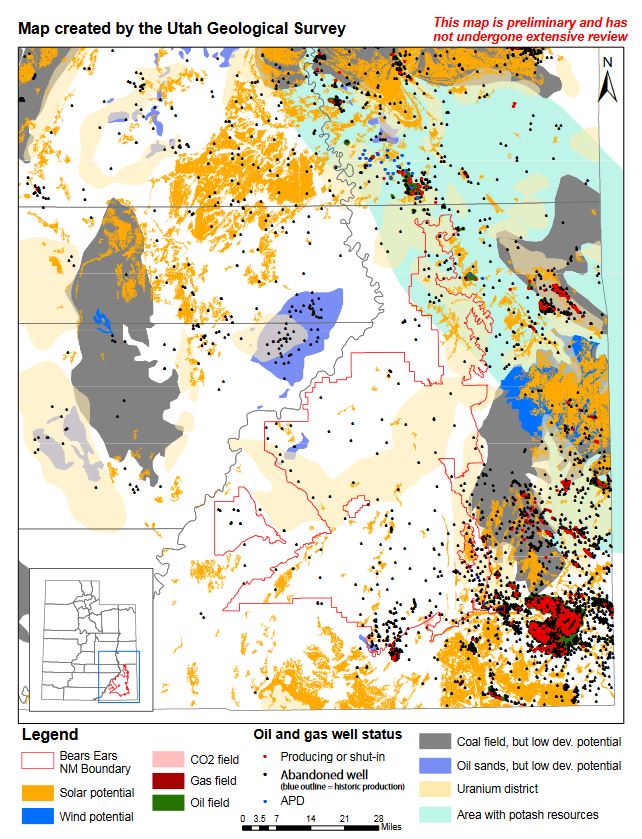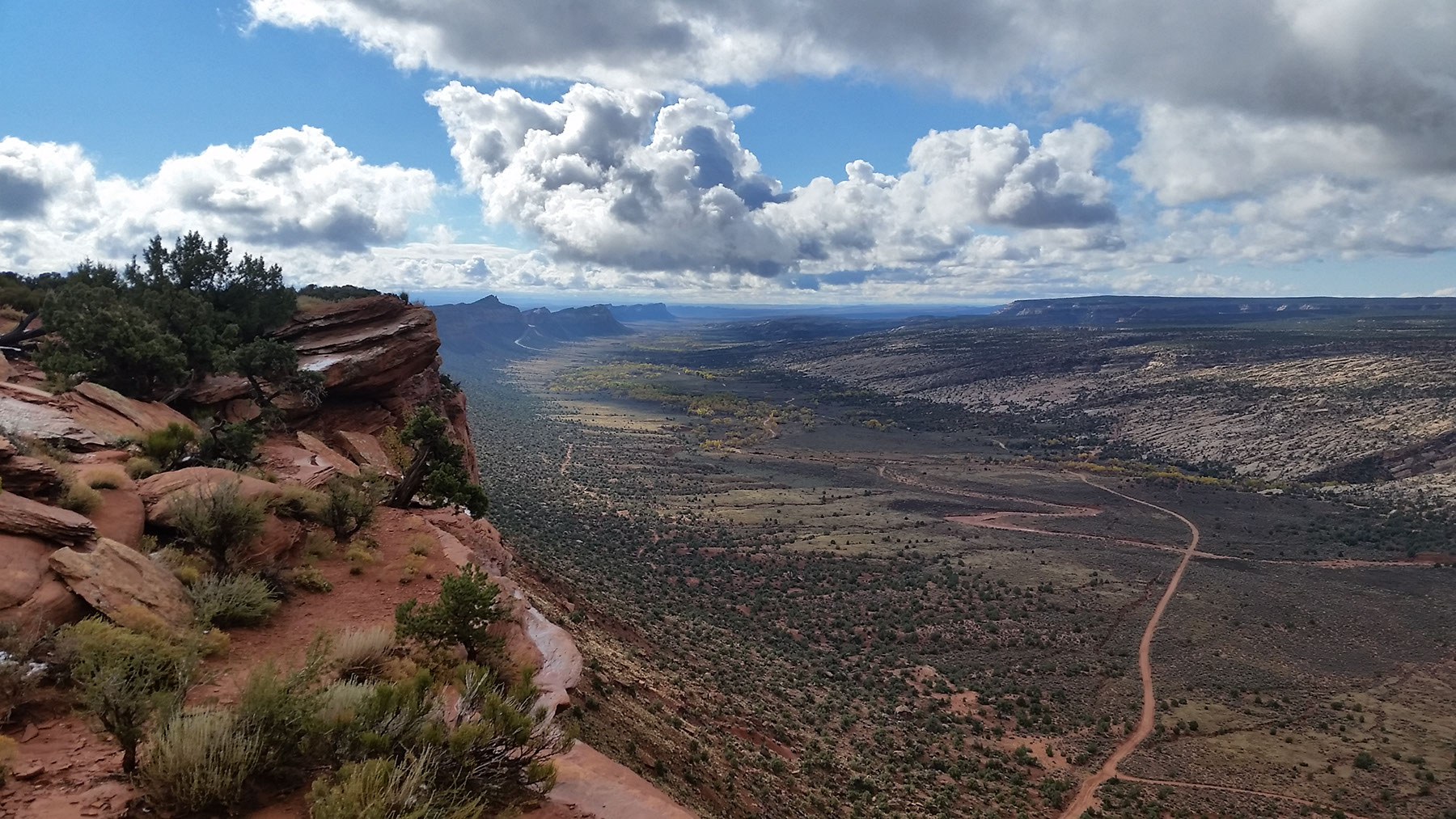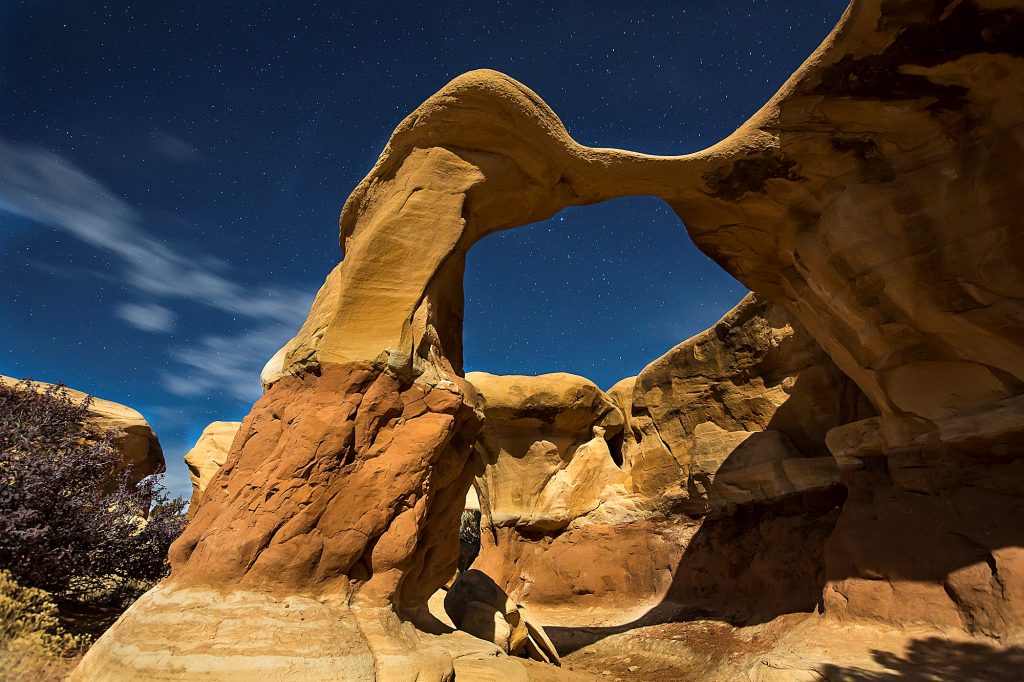Its attempt to raise hysteria over the fact that southern Utah has oil and gas and mineral deposits falls short, especially when the scientific facts related to energy development in the Bears Ears National Monument region are introduced into the discussion.
Commentary by Marjorie Haun
On December 7, the Washington Post published an article implying that President Trump’s executive action reducing and reconfiguring two national monuments in Utah; Bears Ears National Monument (BENM) in southeastern Utah, and Grand Staircase-Escalante National Monument (GSENM) in central southern Utah, was done to free up the lands for oil and gas development.
Heavy on speculation and light on facts, the WaPo article claimed:
President Trump drastically reduced the size of two national monuments in Utah on Monday, potentially opening about 2 million acres of public land to mineral extraction and other activities in a state in which about 65 percent of all land is federally owned. The sites, Bears Ears and Grand Staircase-Escalante national monuments, contain rich troves of archaeological and paleontological finds in addition to large deposits of coal, uranium, oil and gas.
Grand Staircase-Escalante
It’s no secret that the Kaiparowits Plateau, much of which is still contained within the 3 new national monuments–1 million acres–which will replace Clinton’s 1.9 million acre Grand Staircase-Escalante National Monument (GSENM), contains some of Utah’s most desirable clean coal deposits. Central Utah has a long history of coal mining and mineral development, and, dotted with national parks, national monuments, state parks and recreations areas, it is still considered a world-class tourist destination.
But Clinton’s creation of GSENM gutted the region’s coal industry, and has proven economically devastating to small towns in Garfield and Kane Counties which were built on a legacy of resource development.
President Trump’s words at the Utah Capitol on December 4, “I’ve come to Utah to take a very historic action to reverse federal overreach and restore the rights of this land to your citizens,” were partly in reference to Clinton’s shocking 1996 designation of GSENM, which took place without the approval of Utah’s leaders and against the will of locals in impacted communities. It has been widely reported that, as a nod to his supporters in the extreme environmentalist movement, and as a payoff to Indonesian donors who had their own clean coal interests, Clinton created GSENM as a show of raw political force in a state he knew would never support him.
Bears Ears
In its article, WaPo appears to be taking political talking points from big greens such as the Southern Utah Wilderness Alliance, and big outdoor recreation corporations such as Patagonia. Its attempt to raise hysteria over the fact that southern Utah has oil and gas and mineral deposits falls short, especially when the scientific facts related to energy development in the BENM region are introduced into the discussion.
On December 4, the Utah Department of Natural Resources issued a press release stating:
According to studies completed by the Utah Geological Survey, the Bears Ears National Monument (BENM) as originally designated does not hold significant energy development potential. The vast majority of energy potential resides outside the monument boundary.
While there is minimal resource development potential for uranium and potash, there is currently no activity within the boundary. Additionally, there are no coal or wind resources in the area and all the oil and gas wells within the boundary are plugged and abandoned. There are no producing or shut-in wells within the boundary.
It went on to detail the history of development–and attempted development–of resources in the region:
•There have been 287 oil and gas wells drilled in the BENM boundary. All wells have been plugged and abandoned.
•Of those drilled wells, only nine produced oil and six produced gas. 302,027 barrels of oil have been produced with 77 percent of it coming from one well and 94 percent coming from just three wells. These locations were all near each other on the Bluff bench. A total of 204,747 mcf of gas has been produced.
•There has been no production from these wells since 1992. Only the two highest producing wells produced into the 1990s; all others pre-date 1985.
•Most of BENM has low oil and gas potential, except the northeastern and southeastern corners; these areas have moderate oil and gas potential. No APDs (applications for permit to drill) exist within BENM.
•The new BENM is generally west of the Paradox Formation subplay areas shown in UGS Bulletin 137 (Major Oil Plays in Utah and Vicinity). BENM barely starts to encroach into the western most parts of these Paradox subplay areas. There are only a few wells in BENM and the western Paradox Basin of southeastern Utah, and thus we have very little data to have extended the subplay areas farther west.
•The northern Paradox Basin includes not only the main Cane Creek shale oil Paradox subplay area but it also has potential in the Leadville Limestone play. This region of the Paradox Basin includes Canyonlands and Arches NP, and BENM. However, the main Cane Creek subplay trend is again mainly to the east of BENM, overlapping only in the far northeast corner.
Renewable Resources
•There are no recognized or published wind resources within BENM,
•There are no recognized or published geothermal resources within BENM,
•There is only limited and disjointed land with solar potential in BENM,
•A lack of transmission lines makes renewable development in BENM unlikely.
Coal
There are no coal resources within BENM.
Oil sands
There are two minor oil sand deposits in BENM. Both have very low development potential.
Uranium
Historically, Utah is the third most productive state for uranium in the U.S. with the vast majority of its production from the Colorado Plateau. In the region of BENM, uranium occurs in sandstone-hosted deposits with the associated metals vanadium, copper, and molybdenum. BENM has been productive for uranium deposits in the past, and some of the mining districts within the monument continue to hold some promise for future uranium production. In decreasing order of importance these districts are White Canyon, Elk Ridge, Deer Flat, Indian Creek, and Fry Canyon, which have moderate to low development potential.
Potash
Potash resource potential in BENM is found in the Paradox Formation, which is a thick, cyclic sequence of alternating evaporites (including potash) and other sedimentary rocks. The cycles in the Paradox Formation are numbered sequentially from 1 to 29 and a higher number indicates an older, deeper cycle. In BENM, potash resource potential is located in its northeastern extension. Potash is not currently produced in BENM, but is produced just north of the monument. Based on available data the cycles in the Paradox Formation with the greatest potential in BENM are cycles 13 and 18, but other cycles also have potential. An area of approximately 2200 acres of BENM overlaps with one of the BLM’s known potash leasing areas (KPLA). A KPLA is an area where the BLM has made a determination that valuable potash resources exist.
Salt
Similar to potash, salt (NaCl) potential in the BENM is within the Paradox Formation. Thick salt beds are present in the unit and are interbedded with other evaporitic and sedimentary rocks. Although the extent of salt resource potential extends beyond that of potash potential, salt in the Paradox Basin is likely to only be produced as a byproduct of potash production.
Limestone
Limestone resource potential in BENM is limited. In the south part of the monument, thin limestone layers are found in the Honaker Trail Formation and possibly the Halgaito Formation The limestone in these units is interbedded with other rock types inhibiting the potential for economic extraction. Small volumes of limestone have been produced from these formations outside the southern boundary of BENM. In the northern part of the monument, Cutler Group exposures may contain limestone beds as well. Cutler Group limestone is also likely to be interbedded with other rock types and may be of marginal quality. None of these units present substantive potential for high-calcium limestone.
Sand and Gravel
Known past sand and gravel development in BENM is limited to alluvial deposits around the town of Bluff. Sand and gravel resource potential elsewhere within BENM is also primarily from alluvial deposits along stream channels and drainages. Development potential of these deposits is limited due to the remoteness of the area.
Clay
No clay development or production has occurred in BENM, but some resource potential for common clay and shale, bentonite, and high-alumina clay exists in the area. Because these clay resources do not present a unique resource opportunity and because the resources are remote, development potential for clay resources in BENM is low.
The following map accompanied the UGS press release:

This all could just boil down to semantics, since WaPo is attempting to back up its talking points with the same data Utah Geological Survey (UGS) is using to prove the most contentious of the national monuments, BENM, has little or no potential for future oil and gas development.
WaPo’s misleading headline, ‘ Areas cut out of Utah monuments are rich in oil, coal, uranium,’ may seem accurate to those unacquainted with the ins and outs of energy development, but fossil fuel and mineral deposits must have the potential to yield profits before an area is even considered. There may indeed be oil, coal and uranium resources in the ground in southeastern Utah, but according to the scientists at UGS, either due to the size of deposits or the expense and difficulties involved in exploration and extraction, they are not worth the trouble.
A troika of big media, big greens, and big outdoor recreation corporations have launched an unprecedented political campaign against Utah’s locals and elected leaders who want to shrink the massive federal bootprint in the state. The ‘big three’ are waging war not only with President Trump, but with the rural Americans he represents. WaPo has mischaracterized the facts about mineral and energy resources in BENM as something they are not. Fortunately, Utah Geological Survey has no political agenda, so if you ignore the false political narratives deluging the Utah monuments debate, the facts are available for all to see.
[paypal_donation_button]
Free Range Report
[wp_ad_camp_3] [wp_ad_camp_3] [wp_ad_camp_3]
[wp_ad_camp_2]



